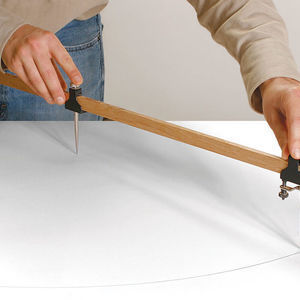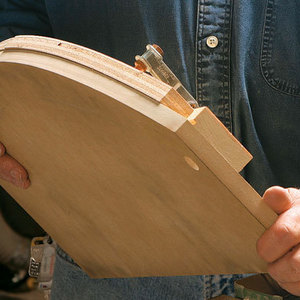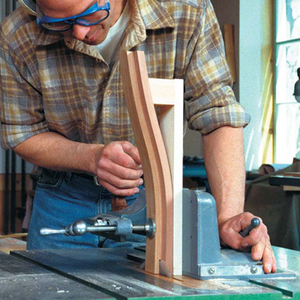Precise Tools for Drawing Curves
Learn simple and effective methods for drawing regular and irregular curves to help you incorporate these graceful lines into your work.
Synopsis: Michael Fortune uses all manner of curves in his furniture. Once he nails down the design, he likes to create full-size drawings of any curved parts. This makes it easier to transfer the pattern to a template or to the workpiece. In this Fundamentals article, Fortune shows how to draw both regular and irregular curves, and then how to transfer those drawings to your work. His methods are simple and effective, and the tools involved won’t cost an arm and a leg.
I use all manner of curves to spring my furniture to life. Once I’ve nailed down the design, I like to create full-size drawings of any curved parts. these make it easier to transfer the pattern to a template or to the workpiece. Having accurate drawings of curved parts also makes it easier to visualize joinery details and ultimately to cut those parts.
I’ll show you how to draw both regular and irregular curves, and then how to transfer those drawings to your work. My methods are simple and effective, and the tools involved won’t cost an arm and a leg.
Use a compass for regular curves
When drawing a circle or a section of a circle, it’s hard to beat a compass for simplicity and accuracy. there are different types, and your choice will be based on the size of the arc you need.
Small radii, usually up to 6 in., are best drawn with a dividerstyle compass. The most basic compass uses a standard pencil as one leg of the divider. These are available at office-supply stores and woodworking stores for as little as $3.
A mechanical compass is a more refined tool. Costing about $10 to $20 at office-supply stores, it uses a special pencil lead in a holder that’s sharpened along the outside at a 30° angle. to maintain that point, you can use a fine-grit sanding block or a sharpening stone. Choose a hard lead (2H), which will hold its point longer than soft lead and will render a finer line.
Beam compasses, or trammels, are used to draw radii from 1 in. to many feet. A beam compass has two separate heads that are mounted on a beam, usually wood. One head has the radius point and the other holds the lead or scribe that draws the arc. Again, use a hard lead and sharpen it in the same manner as the lead in a mechanical compass.
You can buy more robust beam compasses that can be attached to thicker, sturdier beam stock, allowing you to draw large arcs with radii from 5 ft. to 10 ft. these are ideal for working with curved dining tables or other large pieces.
From Fine Woodworking #199
For the full article, download the PDF below:
Fine Woodworking Recommended Products

Starrett 12-in. combination square

Circle Guide

Veritas Wheel Marking Gauge






















Log in or create an account to post a comment.
Sign up Log in